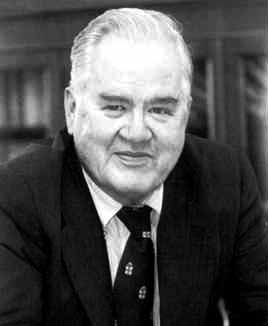John Tukey (nonfiction): Difference between revisions
No edit summary |
No edit summary |
||
| (2 intermediate revisions by the same user not shown) | |||
| Line 27: | Line 27: | ||
== Fiction cross-reference == | == Fiction cross-reference == | ||
* [[Crimes against mathematical constants]] | |||
* [[Gnomon algorithm]] | |||
* [[Mathematics]] | |||
== Nonfiction cross-reference == | == Nonfiction cross-reference == | ||
* [[Box plot (nonfiction)]] | * [[Box plot (nonfiction)]] | ||
* [[Chung Kai-lai (nonfiction)]] - Doctoral student | |||
* [[Arthur Dempster (nonfiction)]] - Doctoral student | |||
* [[Jerome H. Friedman (nonfiction)]] - Colleague | |||
* [[Leo Goodman (nonfiction)]] - Doctoral student | |||
* [[Karen Kafadar (nonfiction)]] - Doctoral student | |||
* [[Solomon Lefschetz (nonfiction)]] - Doctoral advisor | |||
* [[Mathematician (nonfiction)]] | * [[Mathematician (nonfiction)]] | ||
* [[Paul Meier (nonfiction)]] - Doctoral student | |||
* [[Frederick Mosteller (nonfiction)]] - Doctoral student | |||
External links: | External links: | ||
* [https://en.wikipedia.org/wiki/John_Tukey John Tukey] @ Wikipedia | * [https://en.wikipedia.org/wiki/John_Tukey John Tukey] @ Wikipedia | ||
[[Category:Nonfiction (nonfiction)]] | [[Category:Nonfiction (nonfiction)]] | ||
[[Category:Mathematicians (nonfiction)]] | [[Category:Mathematicians (nonfiction)]] | ||
[[Category:People (nonfiction)]] | [[Category:People (nonfiction)]] | ||
Latest revision as of 18:45, 24 January 2018
John Wilder Tukey ForMemRS (/ˈtuːki/; June 16, 1915 – July 26, 2000) was an American mathematician best known for development of the FFT algorithm and the box plot (nonfiction). His statistical interests were many and varied.
Tukey was born in New Bedford, Massachusetts in 1915, and obtained a B.A. in 1936 and M.Sc. in 1937, in chemistry, from Brown University, before moving to Princeton University where he received a Ph.D. in mathematics.
Early in his career Tukey worked on developing statistical methods for computers at Bell Labs where he invented the term "bit".
During World War II, Tukey worked at the Fire Control Research Office and collaborated with Samuel Wilks and William Cochran.
After the war, he returned to Princeton, dividing his time between the university and AT&T Bell Laboratories. He became a full professor at 35 and founding chairman of the Princeton statistics department in 1965.
In 1970, he contributed significantly to what is today known as the jackknife estimation—also termed Quenouille-Tukey jackknife. He introduced the box plot in his 1977 book, "Exploratory Data Analysis".
He was awarded the National Medal of Science by President Nixon in 1973.
In 1974, he developed, with Jerome H. Friedman, the concept of the projection pursuit.
He is particularly remembered for his development with James Cooley of the Cooley–Tukey FFT algorithm. Tukey's range test, the Tukey lambda distribution, Tukey's test of additivity and Tukey's lemma all bear his name. He is also the creator of several little-known methods such as the trimean and median-median line, an easier alternative to linear regression.
He also contributed to statistical practice and articulated the important distinction between exploratory data analysis and confirmatory data analysis, believing that much statistical methodology placed too great an emphasis on the latter. Though he believed in the utility of separating the two types of analysis, he pointed out that sometimes, especially in natural science, this was problematic and termed such situations uncomfortable science.
Tukey retired in 1985. He died in New Brunswick, New Jersey on July 26, 2000.
In the News
Fiction cross-reference
Nonfiction cross-reference
- Box plot (nonfiction)
- Chung Kai-lai (nonfiction) - Doctoral student
- Arthur Dempster (nonfiction) - Doctoral student
- Jerome H. Friedman (nonfiction) - Colleague
- Leo Goodman (nonfiction) - Doctoral student
- Karen Kafadar (nonfiction) - Doctoral student
- Solomon Lefschetz (nonfiction) - Doctoral advisor
- Mathematician (nonfiction)
- Paul Meier (nonfiction) - Doctoral student
- Frederick Mosteller (nonfiction) - Doctoral student
External links:
- John Tukey @ Wikipedia
